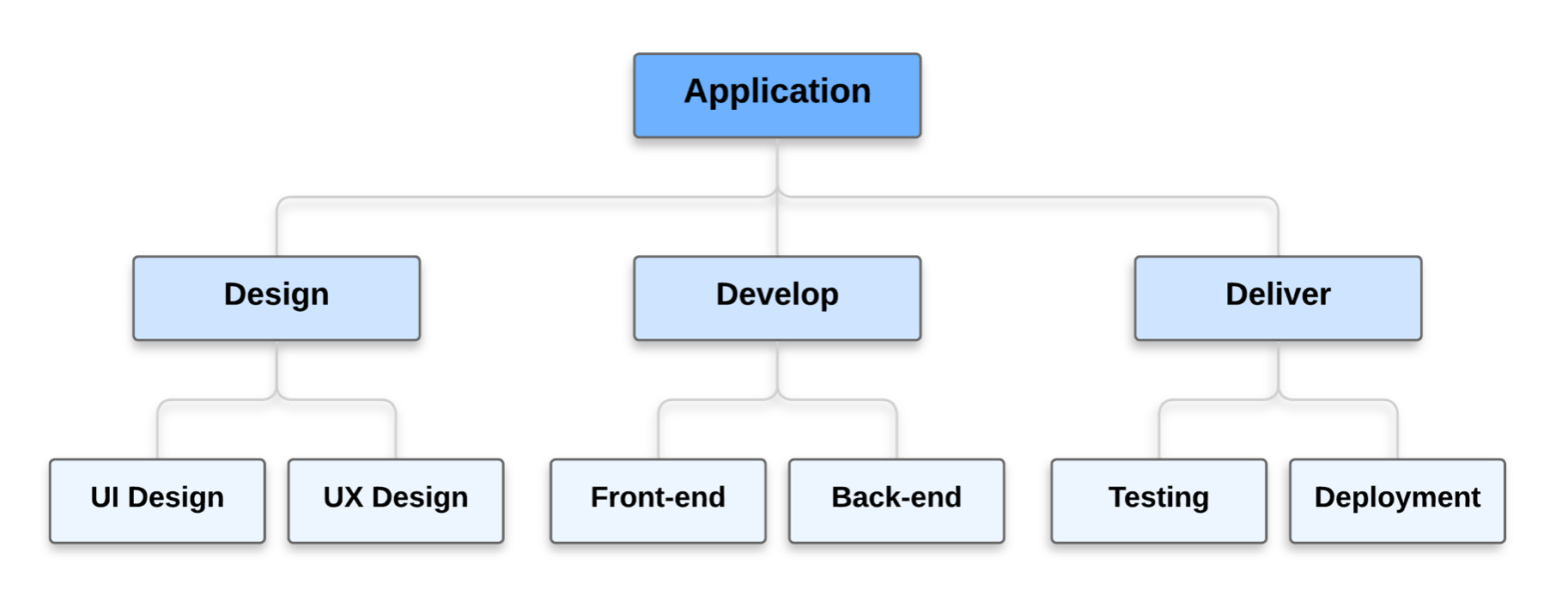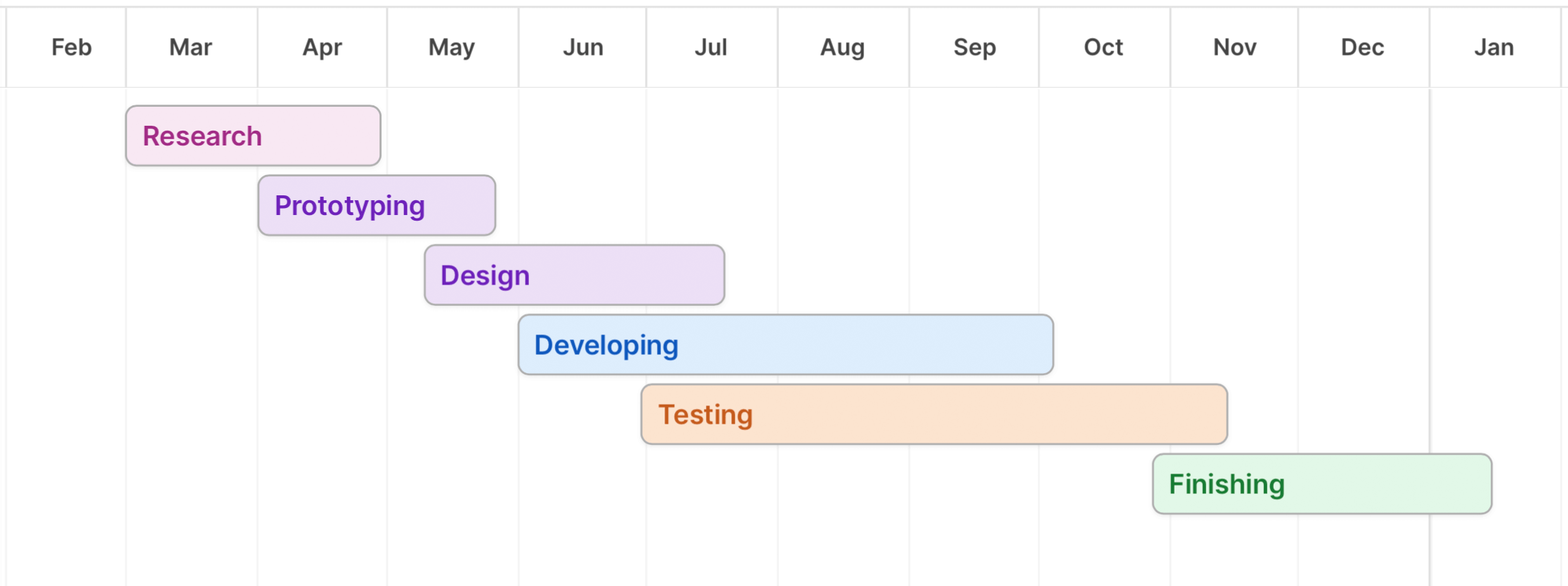Project estimation is pivotal in determining the viability and success of a project. It involves predicting the necessary effort, time, and resources, directly influencing whether a project is worth pursuing from a business perspective. Key reasons for estimation include aligning project objectives with business goals, ensuring efficient resource utilization, setting client and team expectations, and mitigating potential risks.
Project Estimation: Overview
Project estimation is the process of predicting the most realistic amount of effort and resources required to complete a project. This prediction is foundational for planning, resource allocation, and setting project timelines. The core components of project estimation encompass:
- Time: The duration required to complete the project. Accurate time estimation ensures that the project stays on schedule and meets its deadlines.
- Scope: Defines what needs to be accomplished. A clear scope helps in understanding the breadth and depth of the project, ensuring that all necessary tasks are included in the estimation.
- Cost: Pertains to the budget allocated for the project. Proper estimation ensures that the project remains within its financial boundaries.
- Risk: Estimation also involves assessing potential challenges and uncertainties that might impact the project's progress and devising strategies to mitigate them.
- Resource: Predicting the human, material, and technological resources needed. This ensures that the project has adequate manpower and tools at its disposal.
- Quality: Estimating the standards and criteria the project must meet. This ensures the end result aligns with stakeholder expectations and industry benchmarks.
Additionally, the approach to estimation can differ based on the project's pricing model. Two common pricing models are Fixed Price and Time & Material.
In a Fixed Price model, the total cost of the project is agreed upon and set before the development begins. This model offers budget certainty and requires a well-defined scope from the start. However, it can be rigid, and any changes can lead to renegotiations or additional costs.
On the other hand, the Time & Material model bills clients based on the actual time spent by the development team and the resources used. It offers flexibility in project adjustments, transparent billing, and is suitable for long-term projects or those with evolving requirements. The choice between these models often depends on the project's nature, its scope, and the desired level of client involvement. For a detailed comparison, you can refer to this fixed price vs time and material guide.
Effective project estimation, whether using a Fixed Price or Time & Material model, ensures that projects are completed within the stipulated time, scope, and cost, while also managing risks, resources, and quality to achieve desired outcomes.
Reasons for Inaccurate Estimations
Accurate estimations are pivotal in the realm of project management and software development. However, there are several factors that can lead to imprecise estimations. Understanding these reasons can help teams refine their estimation processes and achieve better outcomes. Here are the primary reasons for inaccurate estimations:
- Unclear Requirements: One of the most common reasons for inaccurate estimations is the lack of clear and detailed requirements. When project objectives, deliverables, or user needs are not well-defined, it becomes challenging to gauge the effort and resources needed. This ambiguity can lead to either underestimating or overestimating the required effort.
- Overconfidence: Overconfidence can be a double-edged sword. While confidence is essential for decision-making, an overestimation of one's abilities or underestimation of the task's complexity can lead to unrealistic timelines. It's crucial to balance confidence with a realistic assessment of the project's demands.
- External Pressure: Sometimes, teams might feel pressured to deliver results within a tight timeframe due to external factors such as client demands, market competition, or internal deadlines. This pressure can lead to rushed estimations that don't account for all potential challenges.
- Unforeseen Risks: Every project comes with its set of risks. However, not all risks are evident at the outset. Unanticipated challenges, technical hurdles, or changes in the project scope can emerge as the project progresses, leading to deviations from the initial estimates.
- Lack of Expertise: Estimations require a deep understanding of the task at hand. If the team or the estimator lacks the necessary expertise or experience, it can result in miscalculations. It's essential to involve experts in the estimation process to ensure accuracy.
While estimations are an integral part of project planning, they are susceptible to inaccuracies due to various reasons. By recognizing and addressing these challenges, teams can enhance the accuracy of their estimations and set realistic expectations.
Preparing for Estimation
The cornerstone of accurate project estimation lies in a well-crafted technical task. A detailed and clear technical task ensures that the project's objectives, deliverables, and constraints are well-understood, setting the stage for a realistic and actionable estimation.
Research of the Project Topic
Before diving into the estimation, it's crucial to thoroughly research the project topic. This involves understanding the domain, the target audience, the problem the project aims to solve, and the desired outcomes. Using a tailored questionnaire and engaging directly with the customer can paint a clear picture of the project. However, to avoid misunderstandings, it's essential to keep the following points in mind:
- Diverse Backgrounds: Team members from different fields might interpret terms uniquely. Always clarify terms to ensure alignment.
- Routine Oversights: Tasks that have become habitual might be inadvertently missed. Actively observe processes to capture these details.
- Overlooking Rare Items: While the focus might naturally gravitate towards frequently used features, it's crucial to also account for the less common but essential ones.
- Wants vs Needs: Always differentiate between expressed desires and actual necessities to align with the project's true objectives.
By being vigilant about these points, you set the foundation for a comprehensive understanding and accurate project estimation.
Deep Analysis of Requirements
Once you have a clear understanding of the project topic, the next step is a deep analysis of the requirements. This involves breaking down the project into its constituent parts to understand each element in detail. Decomposition of requirements allows for a granular view of the project, ensuring that every aspect, no matter how minor, is considered in the estimation process. It also aids in identifying dependencies, potential challenges, and areas that might require special attention or expertise.
Must-Have, Needed, Nice-to-Have
Categorizing requirements is a strategic approach to prioritize tasks:
- Must-Have: These are the essential features or requirements without which the project cannot function.
- Needed: While not critical, these features add significant value to the project and are important for its success.
- Nice-to-Have: These are desirable features that, while beneficial, are not crucial for the project's primary objectives.
This categorization helps in allocating resources efficiently, ensuring that critical aspects of the project are addressed first. It also provides a clear roadmap for project development, ensuring that the most important elements are prioritized.
A well-prepared estimation process, rooted in a detailed technical task, sets the foundation for successful project execution. It's also common to develop a prototype or engage in MVP development before embarking on the main project. This approach allows for testing ideas, gathering feedback, and refining requirements.
Estimation Techniques
Let's delve deeper into some of the most popular estimation techniques.
Top-Down Estimation
In the top-down estimation approach, the entire project is initially assessed to determine an overarching time or cost estimate. From this broad perspective, the project is then segmented into smaller, specific phases or tasks. During this segmentation process, the Work Breakdown Structure (WBS) is employed to systematically categorize and detail each component.
The WBS is a hierarchical decomposition that ensures every aspect of the project is considered, making the estimation more comprehensive. This method is particularly beneficial in the early stages of a project when detailed task-specific information might not be available.

Bottom-Up Estimation
This technique is all about the details. It begins at the granular level, estimating the time or cost of individual tasks or components. Once each task has its estimate, they're aggregated to provide the overall project estimate. The strength of bottom-up estimation lies in its precision. By focusing on each task, it ensures that all aspects, regardless of their size or complexity, are considered. It's especially useful for intricate projects where tasks can vary significantly.

Analogous Estimation
Drawing from past experiences can be invaluable. Analogous estimation does precisely that. It uses data and insights from previous, similar projects to guide the current project's estimation. If a project manager has overseen a similar project in the past, they can use that as a benchmark, adjusting for any differences. While it's a quicker method than some others, its accuracy hinges on the similarity between the past and current projects.
Functional Point Analysis
Functional Point Analysis (FPA) is a standardized method used to measure the functionality provided by a system, primarily to assist in estimating the effort required to develop, maintain, or enhance it. Instead of focusing on how the system is built (like lines of code), FPA focuses on the software's functionality.
The software is divided into various functions, each assigned a weight based on its complexity. For instance, a simple login function might have a lower weight than a complex data analytics function. Formulas are then applied to these weights to derive an estimate. One of the primary advantages of FPA is its technology-agnostic approach, making it versatile across different software development methodologies.
Three-Point Estimation
Uncertainty is a constant in projects, and three-point estimation is designed to address that. This method considers three scenarios: the optimistic, pessimistic, and most likely. Two formulas are commonly used here. The first is a simple average:
Estimate = (Optimistic + Pessimistic + Most Likely) / 3
The second, more detailed, is the PERT (Program Evaluation and Review Technique) formula:
PERT Estimate = (Optimistic + 4(Most Likely) + Pessimistic) / 6
By providing a range of possible outcomes, this method offers a more nuanced view of potential project timelines or costs.
Expert Estimation (Delphi Method)
Expert estimation leverages the knowledge of specialists to predict project timelines and costs. Using their experience from past projects, these experts provide insightful estimates. A refined approach is the Delphi Method, inspired by the ancient Greek oracle at Delphi. This technique amalgamates independent estimates from several experts, which are then shared and iterated upon until a consensus emerges, ensuring a comprehensive and collective perspective. For those who require specialized expertise in estimation, consulting experts at software development agency can be invaluable.
The choice of technique often hinges on the project's requirements, its size, the available time, and the stage of the project. Notably, these techniques can be combined for enhanced accuracy.
Estimation Steps
Understanding the scope and requirements of a project is essential, and a structured plan for estimation ensures accuracy and foresight. Here are some general steps to guide the process:
- Define Scope: Begin by outlining the project's objectives, deliverables, and boundaries. This clarity sets the foundation for the entire estimation process.
- Gather Data: Use historical data from similar projects, consult experts, and employ tools or software that can provide insights. This step ensures your estimates are grounded in reality.
- Breakdown Tasks: Decompose the project into smaller, more manageable tasks or phases. This granularity allows for more precise estimates and easier tracking.
- Estimate Each Task: Assign time or cost estimates to each task. Utilize techniques like analogous estimation, where past similar tasks can guide current estimates.
- Assess Risks: Identify potential challenges, uncertainties, or external factors that might impact the project. Consider using a risk matrix to prioritize risks based on their likelihood and impact.
- Validate Assumptions: Every estimate is based on certain assumptions. It's crucial to list them out and validate their accuracy to ensure the estimate remains relevant.
- Review & Refine: As the project progresses, new information might emerge. Continuously revisit and adjust estimates to reflect the most current understanding.
- Document Everything: Maintain a record of all estimates, the basis for each estimate, and any changes made. This documentation aids in transparency and future project estimations.
It's important to note that these steps can be modified, rearranged, or expanded based on the project's nature and the organization's practices. Estimation is both an art and a science, and transitioning to the next phase often involves refining techniques and learning from past experiences.
Additional Tips for Effective Estimation
Here are some essential tips for effective project estimation:
- Consult the Responsible Person: Estimations should primarily be made by the individual responsible for executing the task. Their hands-on experience and understanding of the task intricacies are invaluable.
- Incorporate a Buffer: It's a common practice to add a buffer to estimations to account for unforeseen challenges. Some project managers might add a 20% padding, while others, based on past experiences, might go up to 50%.
- Base Estimations on Assumptions: Every estimation is grounded in certain assumptions, whether it's about the skill level of the team, the reliability of tools, or external conditions. Always articulate these assumptions when presenting an estimate. This clarity helps manage expectations and provides a rationale if conditions change.
- Estimation is a Guess: It's crucial to remember that all estimations, no matter how well-informed, are essentially educated guesses. They're based on the best available data and experience but can't account for every variable. It's natural for actual outcomes to deviate from estimates occasionally.
- Practice and Learn: Before diving into a real project, consider creating a mock project to practice estimation. Review it with peers to identify any oversights or underestimations. Over time, this practice refines skills and builds confidence in the estimation process.
- Combine Techniques: There's no one-size-fits-all approach to estimation. Depending on the project's nature, size, and stage, different techniques might be more appropriate. Moreover, combining multiple techniques can often yield more accurate and comprehensive estimates.
While structured estimation steps provide a solid foundation, these additional tips ensure a more nuanced and effective approach. Remember, the goal isn't perfection but informed foresight.
Tools for Estimation
Effective project management hinges on the right tools. They offer clarity, streamline tasks, and ensure alignment with project goals. Among the plethora of tools, a few stand out for their proven efficiency.
PERT (Program Evaluation and Review Technique) charts provide a visual roadmap of a project. This technique maps out tasks, highlighting the sequence and duration of each, helping teams pinpoint the fastest route to completion and identify potential bottlenecks.

Gantt charts, meanwhile, visualize the project's timeline, laying out tasks against specific time frames. This chart is essential for tracking task dependencies and ensuring the project remains on schedule.

In the realm of digital tools, Project Management Software has revolutionized the way projects are managed. Platforms such as Microsoft Project, Asana, Trello, and Monday.com come equipped with unique features that facilitate planning, scheduling, and collaboration.
In conclusion, the essence of projects may differ, but the need for robust tools is constant. Leveraging these tools ensures smoother workflows and successful project outcomes.
Summary
Project estimation is a critical component in the realm of project management, serving as a blueprint for aligning project objectives with business goals. This process involves a comprehensive understanding of the project's scope, time, cost, and potential risks. By employing a range of techniques, from top-down and bottom-up estimation to expert insights, teams can create realistic project timelines and budgets. Tools such as PERT and Gantt charts, along with project management software, further streamline this process, ensuring clarity and precision.
However, it's essential to remember that estimations, while grounded in data and experience, are inherently educated guesses. They provide a roadmap, but flexibility and adaptability are crucial as projects evolve. Continuous refinement, learning from past experiences, and leveraging the right tools are key to successful project outcomes.
For those embarking on software development projects and seeking expert guidance in estimation and execution, contacting a seasoned app development agency can provide invaluable insights and support, ensuring project success.











